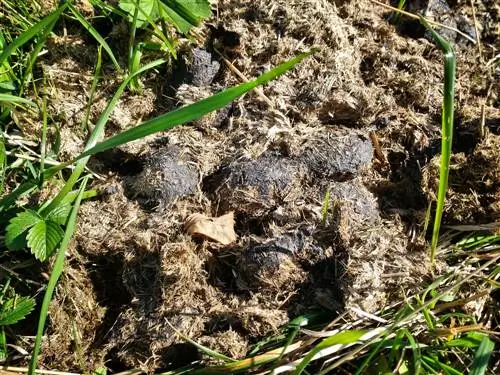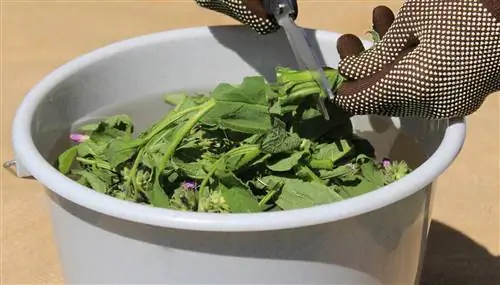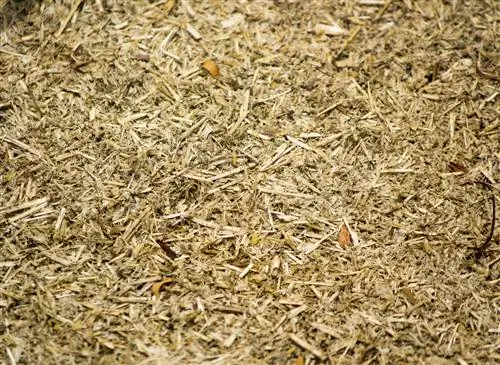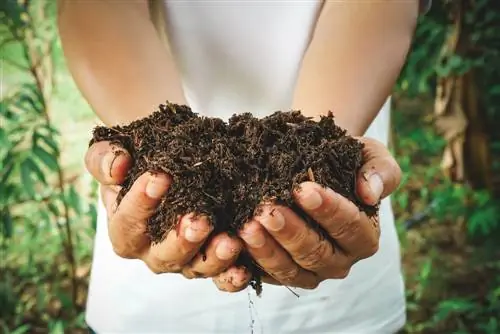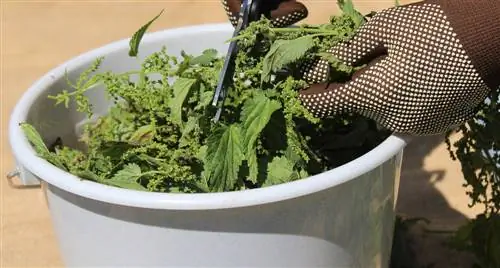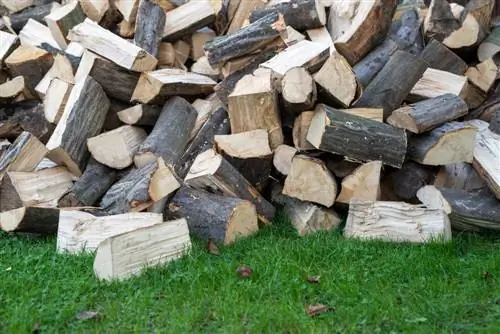- Author admin [email protected].
- Public 2023-12-26 14:17.
- Last modified 2025-06-01 06:02.
What has been part of normal gardening practice for generations is becoming increasingly difficult due to new regulations: fertilizing with horse manure. Anyone who mucks out the stable and stores the material for composting must follow certain regulations. Before storage, horse manure only serves as a limited source of nutrients.

Is horse manure a good fertilizer for the garden?
Horse manure is suitable as an ecological fertilizer that provides plants with important nutrients. Fresh horse manure is best for heavy feeders, while seasoned manure can also be used for more sensitive plants. However, strict regulations now apply regarding the storage and use of horse manure in the garden.
Use horse manure as fertilizer
Fertilizing with horse manure is ecological and good for the plants. It supplies the plants with vital nutrients in a balanced ratio. Horse manure fertilizer has been used in gardens and on farmland for generations. Horse manure is suitable for tomatoes and for filling raised beds. Agricultural businesses also appreciate the material.
Excursus
Fertilizer regulations for horse manure
Many horse owners cooperate with agricultural businesses. They purchase hay, straw or silage from farmers and in return give back their horse manure. The new fertilizer regulations are causing these collaborations to ossify. Pure horse manure therefore falls into the category of farm fertilizer. Regardless of the number of animals they have, stable operators must invest in new storage space before the horse manure is sold to third parties.
New regulations:
- stored horse manure must be covered
- flat rate minimum storage of four months required
- do not mix with kitchen waste
Nutrient content
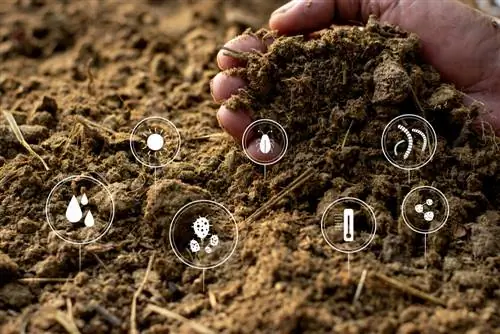
Horse manure is rich in magnesium, nitrogen and other trace elements
Horse manure consists of urine, bedding and horse manure. It is particularly valuable as an organic fertilizer because, in addition to the main nutrients, it contains large amounts of magnesium and trace elements. The ingredients of the natural fertilizer are present in a relatively balanced ratio. The nitrogen content is comparatively high, especially in stored horse manure. Depending on which animal owner you get the manure from, different proportions of litter may be mixed in. It acts as a structure provider and ensures soil improvement.
| stored horse manure | fresh horse manure | |
|---|---|---|
| Total nitrogen | 6, 8 kg/t | 4, 4 kg/t |
| Nitrogen available in the first year | 1, 3 kg/t | 0.6 kg/t |
| Phosphorus | 5, 0 kg/t | 2, 5 kg/t |
| Potassium | 19, 5 kg/t | 9, 8 kg/t |
| Magnesium | 1, 3 kg/t | 0.6 kg/t |
Plants
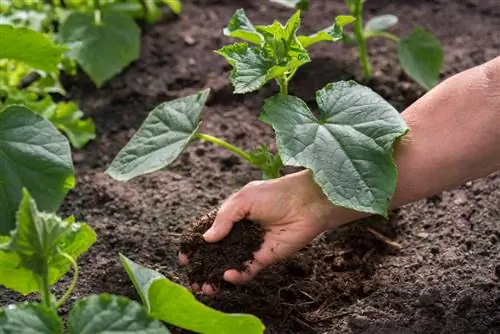
Cucumbers are happy about a portion of horse manure
Fresh horse manure is a good plant fertilizer because it quickly supplies nutrients. Due to the high fiber content in horse manure, humus formation is promoted. The nutrient content of fresh manure is very high. This is not suitable for weak-consuming herbs or young plants. If the horse manure has been stored or composted for at least a year, you can use the substrate for all plants.
Areas of application:
- in the raised bed: cucumbers, pumpkins, zucchini
- in the ornamental plant bed: roses, rhododendrons, hydrangeas
- in the garden: lawn, fruit trees, raspberries
- in the greenhouse: tomatoes, cucumbers, mushrooms
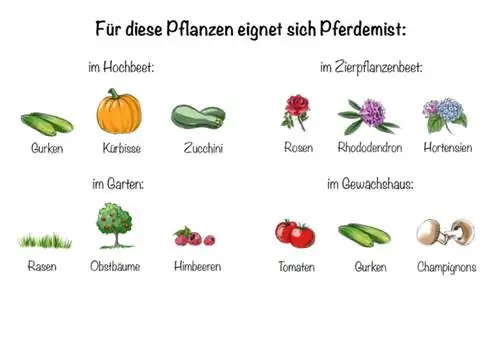
Application
Fresh horse manure is chopped well before spreading. When fertilizing fruit trees, spread the substrate about ten centimeters thick across the tree disc and bury it shallowly in the soil. Alternatively, you can cover the fertilized tree disc with a thin layer of leaves.
Fruit trees and fruit bushes are fertilized in autumn, and the fertilization is sufficient for the next two years. Ornamental shrubs such as roses can be supplied with horse manure annually. Herbs, beds and weak-consuming plants should not be fertilized with fresh manure. It is too sharp for many herbaceous plants and can cause damage if it comes into contact with the roots.
Compost horse manure
In the past, some hobby gardeners did not use the manure directly in its fresh state, but instead made manure compost. This makes the substrate also suitable for fertilizing sensitive plants. Composting fresh manure is becoming increasingly difficult due to the new fertilizer regulations, so you should use stored horse manure from animal owners. If you keep a few horses that produce small amounts of manure, rapid composting is a good alternative.
Fresh horse manure cannot simply be composted. The provisions of the Fertilizer Ordinance apply.
Manufacture
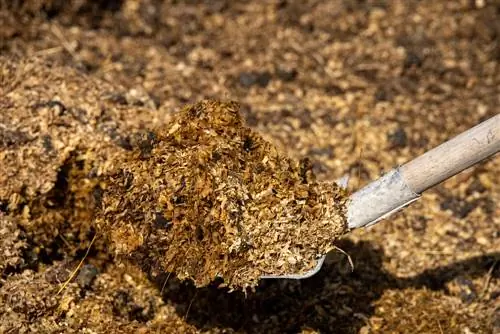
The horse manure is first mixed with wood chips or similar
The manure compost is built separately from the household compost on a sealed area. You can mix the manure with other organic material such as autumn leaves or shredded wood cuttings. During the rotting processes, high temperatures develop inside, which is why the pile should not be higher than 100 centimeters. Cover the compost with foil and ensure sufficient ventilation. Care is important for optimal rotting processes. This includes humidification, loosening and regular moving.
Benefits of Composting:
- Material collapses by 50 percent
- Heat kills fly larvae, worm eggs, pathogens and weed seeds
- Odors are reduced with good ventilation
Compost worms
Worms act as compost accelerators. Since compost worms retreat into the topsoil when there is a risk of frost, the compost must be in direct contact with the soil. Because of the new fertilizer regulations, fresh manure may no longer be stored on an unsealed surface or disposed of in the compost. These regulations are intended to reduce the increasing entry of nitrate into the soil, but worsen the living conditions for compost worms
Storage
Dried horse manure with a dry matter content of less than 25 percent must be pre-rotted on a fixed manure plate for three weeks. You can store the manure in a meadow if it meets certain requirements. This must be used for agricultural purposes and must not be located near water. A minimum distance of 20 meters from the nearest surface water must be maintained.
In this way, the manure cannot be stored for longer than six months. A new deposit must be selected next year. However, storage on highly permeable soils such as sand or on substrates with drainage systems is not permitted.
Tip
Caution is advised when storing horse manure on the property line. In most federal states there is a distance limit of 500 meters for compost heaps up to a height of two meters.
Quick composter
Bokashi is a fermented substrate that is produced in the absence of air. Within a few weeks, effective microorganisms ensure that pure horse manure is decomposed into nutrient-rich substrate. The more straw there is in the manure, the longer it takes to decompose. For this type of compost you need a rain barrel (€109.00 on Amazon) with a lid, a garbage can or thick garbage bags.
Horse manure pellets
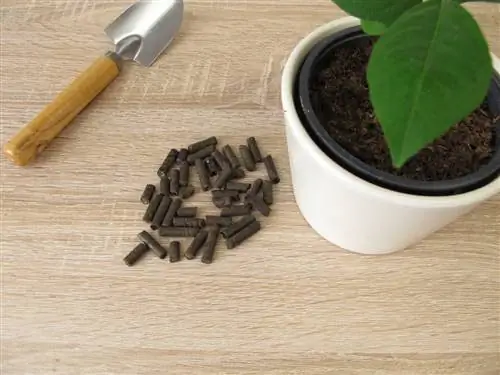
Horse manure is also available as pellets
Drying horse manure is an environmentally friendly method in which the nutrients cannot enter the soil in an uncontrolled manner. The dried manure is used to make pellets that are used for heating and fertilizing. Experience shows that horse manure pellets are an ideal universal fertilizer.
Tip
When you buy pellets or horse manure, you shouldn't just be attracted by cheap prices. Pay attention to the origin of products from discounters such as Aldi. Manure from competition horses can be contaminated with antibiotics.
Make pellets
Pelleting horse manure requires a special drying system in which the material is circulated and treated with hot air. This causes large amounts of moisture to evaporate in a short period of time. The finer the material, the faster the drying process will be. The pellets are then pressed into pellets. Some companies offer horse owners the option of disposing of their manure in the pelletizing system. In this way, the material can be used profitably.
video: Youtube

Pellets - use as fertilizer
Using fertilizer pellets is easy and convenient. Shrubs, fruit trees and vegetable beds are fertilized in spring. Work the pellets into the soil about ten centimeters deep. Then water the areas so that the pellets in the soil can swell and decompose. After about three weeks, a handful of the concentrated horse manure can be sprinkled. Pellets are also suitable for fertilizing potted plants or lawns.
Recommended quantities:
- Potted plants: approx. 200 grams of pellets per liter of soil
- Lawn: 50 to 100 grams of pellets per square meter
- Beds and trees: around 200 grams of pellets per square meter
Frequently asked questions
What specific gravity does horse manure have?
The specific gravity of manure as a ratio between weight and volume is significantly greater in animals with greasy stool than in horses, whose stool consists largely of undecomposed fiber. Free stall manure from cattle weighs 600 to 700 kilograms per cubic meter. Horse manure consists predominantly of straw, so the values range between 200 and 300 kilograms per cubic meter.
Horse dung or cow dung as fertilizer?
Not all crap is the same. Horse manure is high in nitrogen and contains large amounts of undigested plant matter. The manure often contains bedding and straw. Cattle manure has a more balanced mineral ratio than horse manure and contains large amounts of potassium. Depending on the animal husbandry, the manure of both species can be contaminated by medications or chemicals.
Which biogas plant uses horse manure?
Fermenting horse manure into biogas is not that easy due to the high lignin content. Scientists are continually testing how horse manure can be used as fuel. But there are now mini biogas plants for horse manure that are particularly interesting for boarding horse businesses and hobby horse owners. There is a biogas plant in Moers that can burn and recycle straw and horse manure.
Where should the horse manure go?
Disposing of horse manure is now a challenge for many horse owners. Disposal through companies that specialize in horse manure involves costs of varying amounts. They deliver containers to be filled and ensure that the containers filled with horse manure are collected on time. Tilger Service & Handels GmbH is working on a nationwide solution so that collection can be carried out free of charge.

